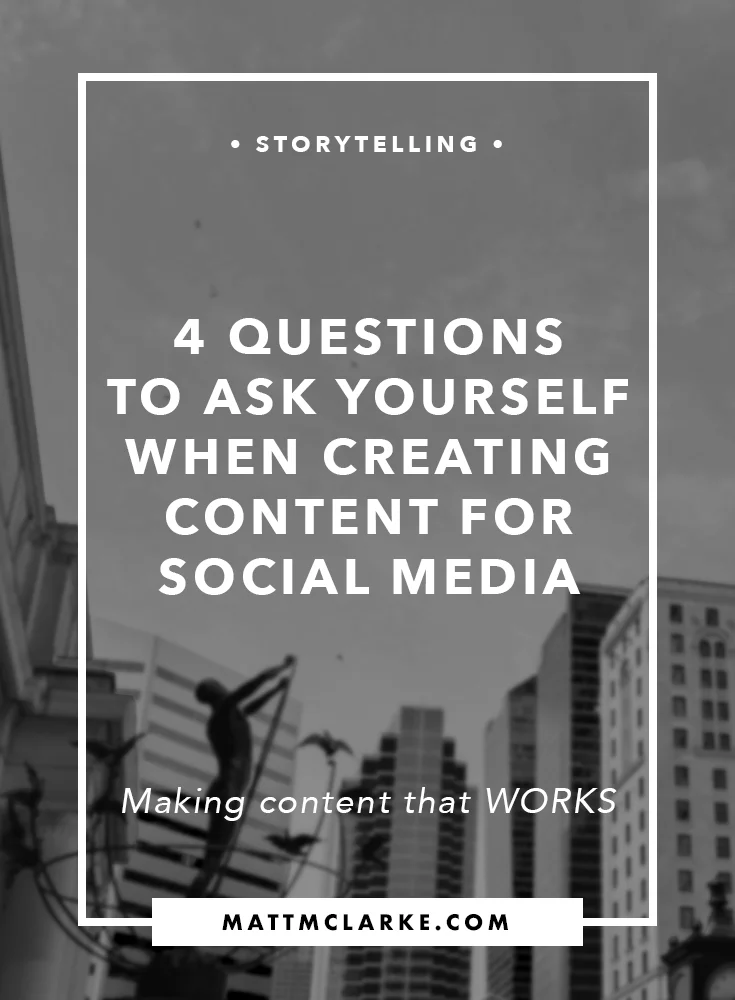Everyone shares content online. Your relative posts their vacation photos on Facebook, your best friend’s new baby has its own Instagram account, at 2 and Wendy’s is still sassy on Twitter.
Amidst all of the noise, you have a business to run. You’re sharing photos, creating graphics in Canva, and posting content you hope your audience enjoys. But for some reason it’s not really making an impact. The posts are doing okay, but your numbers aren’t growing. The followers aren’t rolling in, sales aren’t up, and the engagement is low - you want to show your audience how great your business is, but don’t know how.
All hope is not lost! There is a solution. It’s quite simple.
Storytelling.
Now I’m not talking about posting screenshots of Dr. Suess’ Green Eggs & Ham or reading Moby Dick to your audience - I mean stories about your business.
These stories will answer the questions:
- What does my business value?
- What does my business represent?
- How does my business make people feel?
- Why should my audience care?
Utilizing story elements throughout your content will answer these questions and result in your content standing out from the rest. You will build a lasting relationship with an audience who understands your business and what you stand for. Through clarity and consistency you’ll soon have a feed to be proud of and a hyper-engaged audience providing the growth you’re looking for.
What Is Storytelling?
If I asked you to describe what Nike, what would you say?
For me, terms like “freedom”, “athleticism”, and “innovation” come to mind. Nike isn’t just sneakers and apparel - their brand goes deeper than that. It’s not about the product, it’s about the identity. And it’s precisely this identity that leads someone to choose Nike over Adidas or Reebok. By representing their values in everything they do (their copy, social feeds, ads, etc.), Nike has created an easily recognizable brand identity that resonates with their target audience.
Now I know you don’t have the budget of Nike. Very few do. But you don’t need to hire the best artists and designers in the world to create your content to find success online.
All you need is a compelling story.
In a very (over)simplified form, every story should include:
- A main “character” (your business and your product/software/service)
- An obstacle or conflict (the problem your business was built to solve)
- A resolution to the obstacle/conflict (what you product does and how it makes people feel)
A good story makes the audience feel something; excited, sad, surprised, inspired - any emotion you want, really. By making an emotional impact with your creative, you leave a lasting impression with your audience. They remember how your content made them feel, more than what that image looked like. They associate these feelings with your brand and it guides their understanding of who you are and what you represent.
Stories let your audience insert themselves into your brand. They find a way to see themselves using your product, accessing your service, or living your lifestyle. They truly believe what you believe. It’s an extremely powerful way to create lifelong brand ambassadors. These people will be your champions. They will be your source of growth, a reservoir of content, and the biggest reason for your success. Telling a brand story that resonates will allow your business to thrive.
Storytelling In Action
I want to show you an example of a profile that communicates their brand story in a way that is easily digestible and quick to understand (and doesn’t rely on expensive visuals).
Take a look at @seanwes on Instagram. Sean McCabe is a lettering artist turned teacher, podcaster, and creative entrepreneur. He believes in the importance of having a healthy mindset, adding as much value as possible to everything you do, and setting clear goals. His Instagram feed is filled with tidbits of knowledge, both in text and video forms, to show you his personality and his thoughts. In his Instagram Stories he provides behind-the-scenes looks into his process, building rapport with his audience so they can understand him even better. He also continues to engage with his audience on Twitter, an example of trans media storytelling (blog post to come).
I picked Sean’s feed because it’s really not that exciting. It’s filled with text, his face, and that’s about it. It may not be lavish beach villas, or drone photography, but it doesn’t need to be. That’s not his brand. Sean is extremely consistent in his visual style (a design background helps) as well as his messaging. It shows that you don’t need “fancy” brand photos or videos to tell your audience who you are and what you value.
There are other companies that do a really good job showing us who they are with photo/video, such as WANDRD (using photos from their community) or Merit Brewing (consistent visual style and great variety). No single image tells the complete story of these companies, but when you look at the entirety of their feed, you get a sense of who they are. Combining this social “vibe” with specific moments that deep dive on the personal side of your business is the key to storytelling on social.
Your business is more than the product you sell or the service or software you provide. You have a unique story to tell, and that story has power. The power to build an audience, the power to make a difference, and the power to make you money. Craft your story and share it with your audience. It’s worth it.
If you have any questions or want to get in touch, hit me up on Twitter or Instagram to chat!


